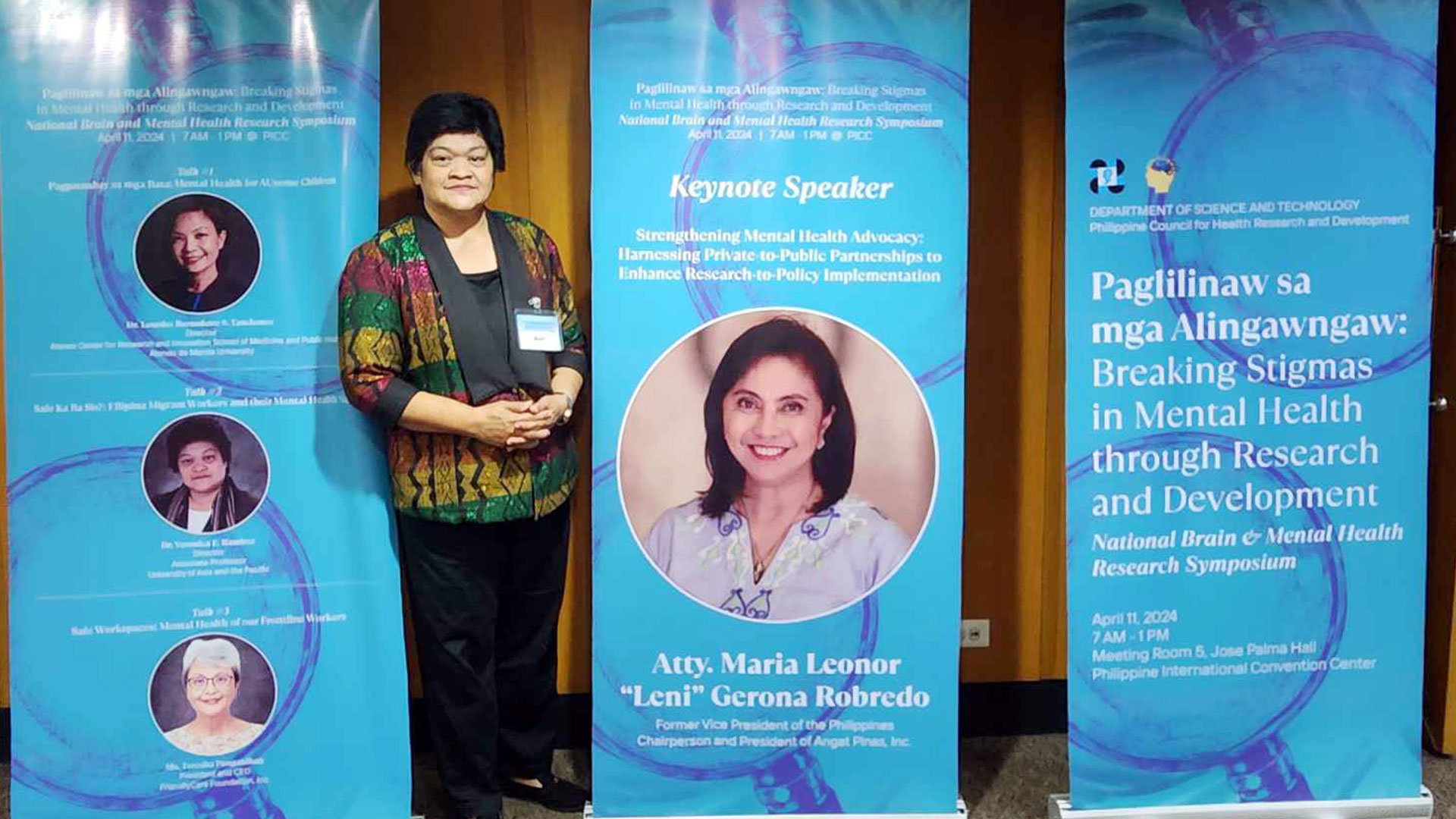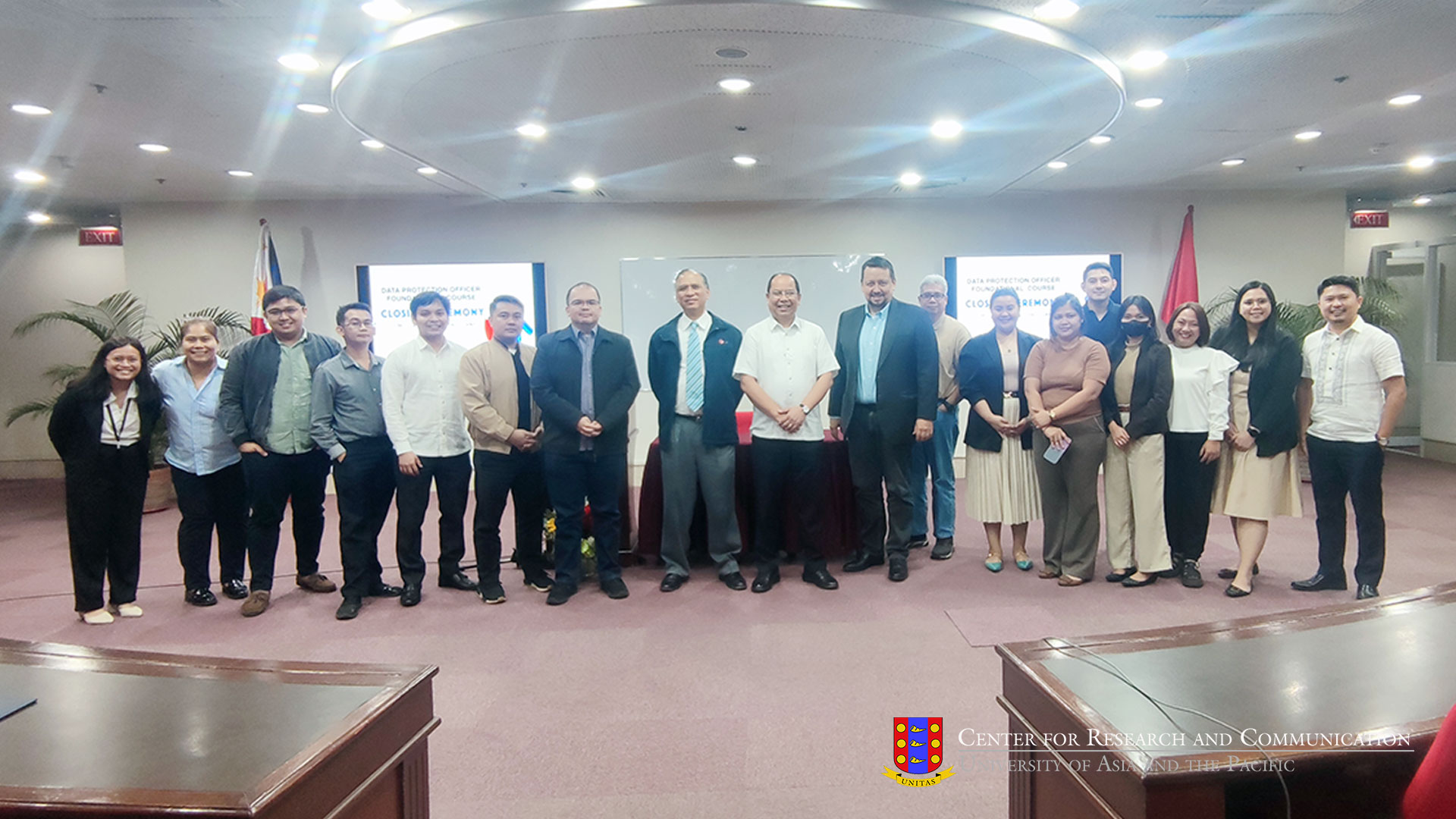CRC Director for Research and UA&P Professorial Chair holder for Social Entrepreneurship Dr. Bernardo M. Villegas shares his thoughts on the Philippine economy at PLDT Enterprise ONE News’ TechTalk on Air’s April 23 Webinar Session.
Pasig City — Nearly two months into the Enhanced community quarantine throughout Luzon, and with so much of Philippine business dependent on the comings and goings within the capital, it can be hard for anyone living in the NCR to find perspective, much less stay positive about the prospects of a productive Philippine economy.
So when an economist like CRC Director for Research Dr. Bernardo M. Villegas suggests that there’s reason to be optimistic about a V-shaped Philippine recovery, people listen. That was certainly the case at “TechTalk on Air” Webinar episode put together by the partnership of PLDT Enterprise and ONE News last April 23 to discuss “the future of work” as Philippine industries cope “with the changes brought by the pandemic.”
In the webinar, Dr. Villegas was asked to give his perspective on the local economy and how it might fare in a post-quarantine scenario, and he pointed out that the country could count its blessings – because while it’s going to be affected just like the rest of the world’s economies, the Philippines was hit just as the country had been looking forward to “the most favorable economic circumstances.”
And while the country looked forward to a new normal, he expected the “old normal” of the Philippines’ competitive advantage to hold true, with the country more likely than not to experience the kind of “V-shaped recovery” coveted by economies around the world.
“In fact,” he furthers, “a recent report of the International Institute of Finance in Washington, identifies China Indonesia and the Philippines as the only economies that will post a positive growth albeit low between 1 to 2 percent, and that is because we are focusing on our local consumers and our private consumption consists of 70% of our GDP.”
He cited four reasons for believing this: our young, competitive workforce; the country’s consumption-driven nature of the country’s economy; the opportunities presented by the Philippines’ relative fiscal health; and the fact that at least for now, our economy isn’t as dependent on exports as other economies around the world, and therefore aren’t as likely to be hit by the drop in demand for consumer exports.
 Demographic dividend.
Demographic dividend.
Even before the crisis struck, Dr. Villegas had already been speaking a lot about the “sweet spot” represented by the country’s young, competitive workforce. With the population of most countries in the world aging at a rapid rate, he notes that the Philippines is one of only a few countries – notably including Indonesia and Vietnam – who are enjoying a “demographic dividend.”
Villegas expounds further: “This doesn’t only mean we have lots of human resources, supplying the word with 10 million overseas workers. It also means we also have a large pool of more than one million [31:27] workers for the BPO-IT sector which is denintiely one of the sectors that is going to survive this pandemic.”
Geographic proximity.
Yet another “sweet spot” that Dr. Villegas has been discussing since before the crisis is the Philippines’ ideal geographic location.
“[…]We are at the epicenter of the most dynamic economic territory in the world today,” he says, “which is the Asia Pacific. Especially with China, India, and the Asian Economic Community as our neighbors. As everyone knows, these are the economies that will recover earlier than anyone in the world, and we [can definitely] take advantage of our geographic proximity to these economic giants.”
“We are still fiscally responsible.”
In light of the government spending requirements that are inevitable in light of the COVID-19 crisis, Dr. Villegas cites another reason to be positive about the prospects for a V-shaped recovery for the Philippine economy.
“The third sweet spot that we have is fiscal,” says Dr. Villegas. “Thanks to the last three administrations – these three administrations of the past – we have maintained fiscal responsibility. Our debt to GDP ratio is the lowest in the region. That means that our government can really act as a prime mover in attaining recovery […to ] be at the forefront of making sure that our recovery is as much as possible a V-shaped recovery, by priming the pump with literally hundreds of billions of pesos… and we can borrow a lot for that, because we are still fiscally responsible.”
“A temporary advantage”
Dr. Villegas continues: “The other thing I’d like to [mention] – though it’s not exactly a sweet spot, let’s say a temporary advantage – is that our Export-to-GDP ratio is very low. So even [though] the world will post large negative growth rates, we are not going to be as affected as countries like Singapore, Hong Kong, Taiwan, or Malaysia which are very dependent on exports.
“My forecast is that [we can still have a positive growth rate] as long as we can have a normal situation by July 1st. I could be wrong, of course, but I’m assuming that by July 1st there’ll be a lot more freedom of movement for people, of goods and services. As long as that happens, then by the second semester we can have a quick recovery so we can grow at 4% GDP-wise in the second semenster. [Even] with 0% in the first semester, that still means 2% growth for the whole year.”
He had also spoken about the Philippines’ strong domestic retail market earlier in his talk: “We also have the tremendous advantage of having a strong vigorous domestic market, which insulates us many times from world crises. […] So when the word is turning down, [the last 20 years that the Philippines have shown us that we] can still grow, because our businesses focus on selling to 110 m Filipinos[….] That is also going to happen this year.”
Which industries are going to lead?
Dr. Villegas’ time on the webinar was cut short due to technical difficulties and time constraints, but before his segment ended, he was able to begin answering a question which was on everybody’s mind once he explained there were good reasons to be bullish about the Philippines’ post-crisis economy.
Exactly which industries are going to lead this “V-shaped recovery?”
“Very obviously,” Dr. Villegas began, “it’s food and agribusiness. In fact, that is the sector that has been least affected, because people have to eat. And that is what’s been propping up our economy – from the farm to harvest to logistics and manufacturing to supply chain and retailing – it’s food that will definitely predominate in the recovery.”
“And I’m very glad,” he furthered, “that this pandemic has finally gotten our leaders to realize what we have been telling them all these years: agriculture is the most important sector in which they have to invest a lot more […] so that we can attain greater food security.”
“Another sector [that will] obviously lead the recovery will be health related – pharmaceuticals, all types of health foods, even fitness. People are going to be very conscious in the new normal about improving their immunity, because that’s one of the things that we learned. It’s not only [about] being prepared with all sorts of medicine and curative products, but [making] sure that our citizens have enough rest, enough food, and enough fitness.”
Dr. Villegas also said that he believed the education sector had a big part to play in the Philippines’ potentially v-shaped recovery. “Another sector that will definitely recover as soon as we can open our classrooms will be education. In fact there are a lot of conglomerates that have invested heavily in schools.”
But does that mean the kind of transition to online modalities, as has been pushed by some sectors? Dr. Villegas doesn’t think so. Arguing that most schools will not be able to afford the investments needed to make that kind of transition, he says “90% of our students will still need to go to class. And that means that we really need to open our classrooms as soon as possible. And that will definitely contribute to a big portion of the recovery in terms of the expenditiures related to education – transport, of course, [and] all the expenditures of schools.”
Dr. Villegas was less optimistic about the prospects of the tourism sector, but offered his thoughts on the prospects of hope for the industry.
“Well, it’s very clear that tourism and travel will suffer for a long time, so I cannot be optimistic about [those] two sectors,” he notes. But then he adds: “If we know how to market our tourist destinations to 110 million Filipnos then we can get our domestic tourism to get back on track as quickly as possible.”
“Filipinos love to travel. Since they will not be travelling abroad for a long time, if there is more freedom of movement along the archipelago, you can be sure that many filipinos will [pursue] domestic tourism, which can somehow improve the [prospects of the] travel sector a little.”
The “TechTalk on Air” webinar episode in which Dr. Villegas guested was aired last April 23 on CIGNAL TV’s UHF channel, as well as on the social media accounts of PLDT Enterprise and ONE News. The two other keynote speakers at the event were Cyrus Mewawalla, Head of Thematic Research at GlobalData; and Jovy Hernandez, President and CEO of ePLDT Group.
They were also joined by a distinguished panel of industry leaders, which included PLDT Enterprise Digital Solutions Vice President John Gonzales; Philippine Chamber of Commerce and Industry (PCCI) Chairwoman Bing-Sibal Limjoco; LBC Express Senior Vice President and Chief Information Officer Alfie Deato; Semiconductor and Electronics Industries in the Philippines Foundation Inc. (SEIPI) President Dr. Dan Lachica; Business Process Association of the Philippines (IBPAP) President and CEO of IT Rey Untal; Yuchengco Group of Companies (YGC) Chief Innovation and Inclusion Officer Lito Villanueva; and Asian Institute of Management (AIM) Associate Professor Richard Cruz. • | Staff Writer || CRC.
———————————————
The Center for Research and Communication is a research and consultancy group that partners with the University of Asia and the Pacific (UA&P), drawing upon UA&P’s considerable human and knowledge resources to meet the research needs of businesses and development agencies throughout the Philippines. To find out more about CRC, you can reach out by email using [email protected] .
The original webcast can be viewed on OneNews.PH’s youtube channel at https://www.youtube.com/watch?v=-wxzKvNpLLo&t=54s .







